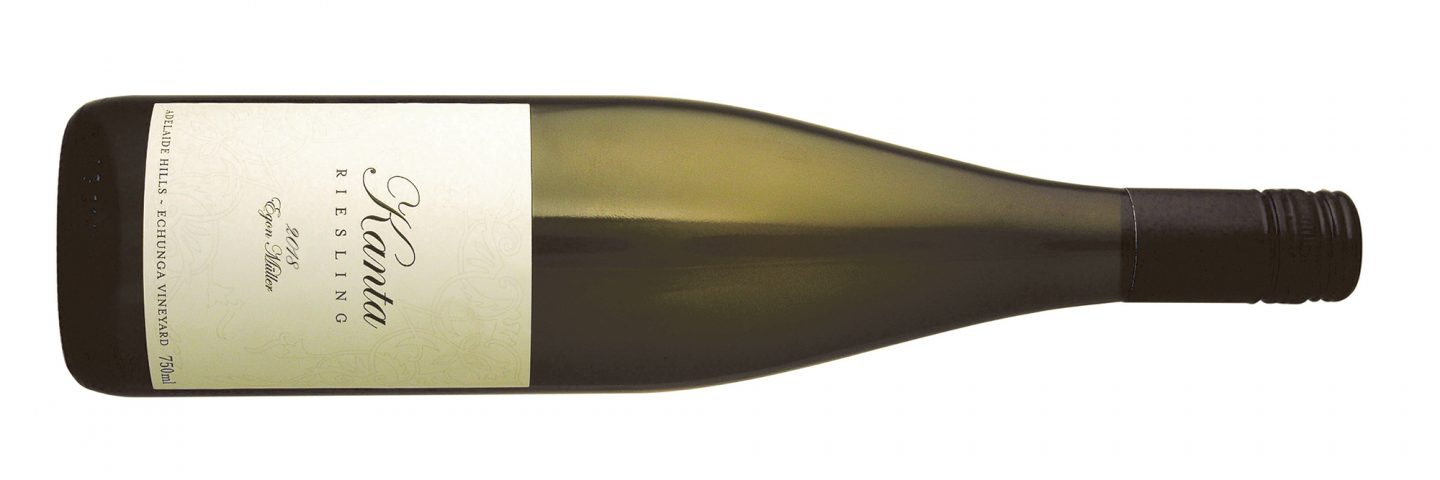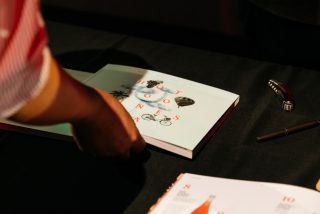Hot 100 Wines:
Making riesling at a Kanta

Kanta is an Australian riesling unlike any other, claiming the #6 spot in the 2019/20 Hot 100 Wines countdown.
Its grapes are grown in a high vineyard east of Echunga in the Adelaide Hills; its winemaker, who flies in each year to make the wine, is German. And he is not just any German: Egon Müller is the fourth-generation vigneron and winemaker of the venerated Scharzhof winery in the Mosel region of western Germany. The top end Scharzhofberg rieslings – notably the Auslese and the frost-dehydrated Eiswein – are among the most highly prized, and highly priced, wines in the world.
Müller’s partner in the Kanta project, now hitting its 15th vintage, is Michael Andrewartha, proprietor of East End Cellars. The pair were introduced while Andrewartha was on a tasting and buying trip to Italy. Müller was already nursing an ambition to try his hand at making a riesling from Australian fruit, and Andrewartha agreed to be the local anchor for the venture.
In 2004, Müller flew out to conduct auditions. The pair visited the Clare Valley and Tasmania, but eventually settled on a vineyard near Balhannah in the Adelaide Hills. Part of the decision, Andrewartha says, was due to the heat of the season – Müller was alarmed by the sight of sunburned fruit, and opted for the highest, coolest conditions he could find.
The vineyard was leased from its owners, Shaw & Smith, as were winemaking facilities.
The first vintage of Kanta was made in 2005. Some consideration was given to fermenting the wine in aged wooden casks, the “füder” of the German tradition, but in the end Australian convention in the form of stainless steel won out.
Since 2009, Kanta has drawn its fruit from Echunga. “The vineyard is 100 metres higher in altitude and has much smaller berries and much smaller bunches.”
Andrewartha says the winemaking approach is characterised by extended skin contact. Macerated skins were left in contact with the must for eight hours in the earlier vintages, although this has now been pulled back to two or three. A long fermentation on lees lasts up to six months.
“It was quite unique and a bit ground-breaking back then – it’s quite trendy now,” Andrewartha says.
“We didn’t know what we’d have until we made it. We set out to make a wine in Clare Valley style, a crisp dry white with good acidity, a drink-now style. But with the fruit we’re handling and the winemaking style, we’ve changed the parameters a bit.”
The wine is allowed to mature for 12 months in the bottle before release. “It’s sort of an ugly duckling to begin with, and then turns into a beautiful swan – it’s a bit disjointed when it goes into the bottle.”
When you start making a wine from scratch, there is an inevitable degree of suck-it-and-see. “We didn’t know what we’d have until we made it,” Andrewartha says. “We set out to make a wine in Clare Valley style, a crisp dry white with good acidity, a drink-now style. But with the fruit we’re handling and the winemaking style, we’ve changed the parameters a bit.”
Over its existence, Kanta has emerged as a riesling that benefits from maturation, and the partners deliberately keep back a substantial portion of each vintage to release when aged. At East End Cellars, you’ll find the 2013 vintage sitting on the shelves alongside the 2018 release that made the top 10 of the Hot 100 SA Wines.
On the vertiginous, slate-laden slopes of the Scharzhof vineyards, picking by a crack team of 40 can last up to a month, allowing the ripeness of each bunch to be individually assessed (which goes some way to explaining the steepness of the wine’s final price). In Echunga, the picking is done in two days, but judging the ripeness of the fruit is still crucial, not only for the quality of the wine but also to calculate the timing of Müller’s arrival to supervise the vintage. It’s a decision that lies with Andrewartha: “That’s what I’ve got better at – getting him on the plane at the right time,” he says.
Once in the Hills, Müller adopts the same hands-on practices he follows in the Mosel. “He spends a lot of his time on the back of the tractor, sorting the fruit out,” Andrewartha says.
Andrewartha says that for him, Kanta represents an enormously enjoyable experience: “I never set out to do it, it just happened that way. Egon and I are very different people, but we’ve become very good friends. He’s one of the top 12 winemakers in the world, and it’s an honour to be in business with him.”
It’s rather nice for us too.
